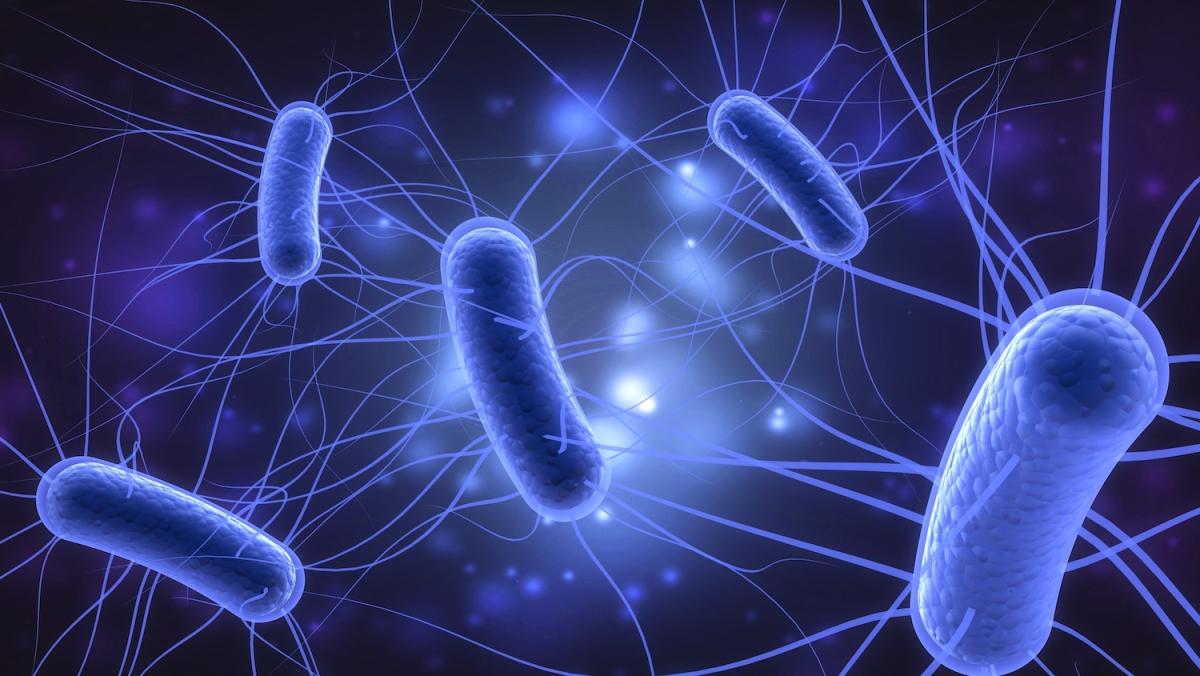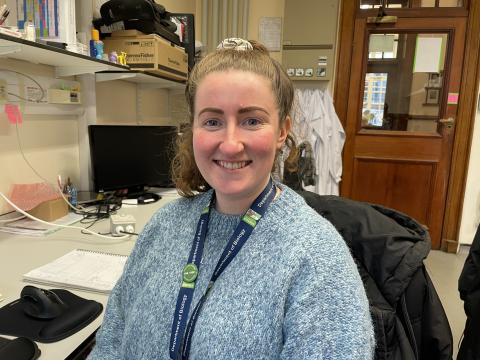Escherichia coli bacteria naturally live in the intestines of humans and animals. Most E. coli strains are harmless and aid with digestion and preventing harmful bacteria from colonising the gut. People can pick up harmful strains of E. coli through contaminated food and water, or by contact with infected animals or people.
E. coli has the ability to rapidly accumulate resistance to multiple antibiotics. E. coli caused 65% of all antibiotic-resistant bloodstream infections over the past five years in the UK.

Some types of E. coli bacteria keep the intestinal tract healthy, while others cause infection. (Image credit: Shutterstock)
Dr Elizabeth Cummins, a post-doctoral researcher at the IOI, is examining how harmful strains of E. coli evolve to become resistant to antibiotics, and how this evolution can be interrupted. Dr Cummins is one of ten recipients of the recent AMR Knowledge Exchange Fund awarded by the IOI and Oxford AMR Network. These grants enhance collaborations and expertise in antimicrobial research while enabling scientists to build professional networks, develop new skills, and engage with stakeholders.
Dr. Cummins used her grant to travel to Norway, to visit the Probabilistic Inference Laboratory at the University of Oslo. Working alongside Professor Jukka Corander's research group, she gained experience in statistical microbial genomics, including hands-on training with 'panGWES', a sophisticated bioinformatic tool developed within the group.
PanGWES represents a new approach to understanding bacterial evolution. Basically, understanding how bacterial genes interact with one another and evolve together to influence observable traits, such as a bacterium’s ability to cause disease or resist antibiotics.
This allows researchers to map how different genetic elements work together to cause antibiotic resistance. Dr. Cummins received specialist guidance on optimising panGWES parameters and learned how to efficiently analyse large complex genomic data, focusing on how epistasis and co-selection drive the evolution of the multi-drug-resistant E. coli lineage ST131.
Working with Professor Corander's team in Oslo supported my research analysing drug-resistant E. coli. The ongoing collaboration we've built is what antimicrobial resistance research needs, combining expertise across borders to stay ahead of evolving bacterial threats.

The visit extended beyond technical training and Dr. Cummins continues to actively collaborate with Jukka Corander's research group. Perhaps most valuable of all, the AMR Knowledge Exchange Fund facilitated a continuing relationship with the team in Oslo, whose genomics expertise now supports her ongoing research.
